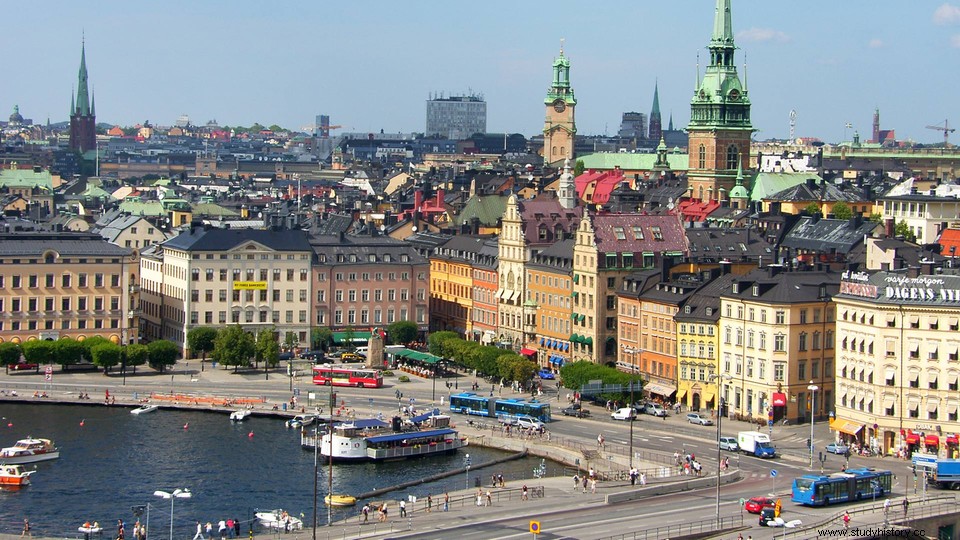Alfred Nobel was already a well-known man during his lifetime. But he became world famous after his death, when he donated his entire fortune to the Nobel Foundation. This foundation has been awarding the most important award for science and society since 1901:the Nobel Prize.
Explosive career
Alfred Nobel was born on October 21, 1833 into a family of engineers in Stockholm. After an elite education with private tutors and numerous study trips abroad, he turned his attention to explosives production from 1859 onwards. He wanted to use the enormous explosive power of the highly sensitive nitroglycerine for explosive technology in a controlled manner.
In 1867, Nobel achieved the breakthrough of his efforts by soaking up nitroglycerine in diatomaceous earth:dynamite was invented. Nobel knew how to commercialize his invention, which he patented in Sweden and abroad. Dynamite - with its help railways and roads could be built, ports, tunnels and mines built.
By 1873, 15 Nobel companies had been set up in 13 European countries and the USA. By the end of his life, Alfred Nobel had registered 355 patents and was one of the wealthiest people of his time.

Nobel's hometown of Stockholm
The idea of awarding prizes
In 1876 Alfred Nobel met the Austrian pacifist Bertha von Suttner, who worked for him as his private secretary for a short time. Nobel admired von Suttner's commitment as a peace campaigner. She encouraged the industrialist to donate a peace prize – in 1905 she herself was the first woman to receive the Nobel Peace Prize.
With the Peace Prize, Nobel first came up with the idea of awarding prizes. In his testamentary decree of November 27, 1895 on the foundation of the Nobel Prize, Nobel stipulated:The annual interest income of the foundation should be divided into five equal parts and "awarded as prizes to those who have rendered the greatest benefit to mankind in the past year". .
In addition to the award for peace efforts, there should be a prize for literature in which Nobel was particularly interested. In addition to technical inventions, he himself published novellas and poems, including "The Sisters" (1862) and "The Patent Bacillus" (1895).
Nobel felt a certain sense of guilt towards physics and chemistry because scientific research in these fields had made his inventions possible in the first place, but usually brought little financial benefit. Finally, Nobel identified medicine as a discipline worthy of an award because it helps sustain humanity.
Nobel's will
On December 10, 1896, Alfred Nobel died of a brain hemorrhage in San Remo, Italy. The settlement of his estate turned out to be a lengthy task. First of all, hereditary problems with the disappointed relatives had to be clarified by appropriate comparisons.
Finally, in June 1900, the Swedish government approved the proposal for the founding statutes of the Nobel Foundation, and five months later the foundation management took over the administration of the fund.
The Nobel Foundation is a type of investment company that focuses its investment policy on equities, fixed income securities and real estate. The Foundation's prices and organizational costs are paid from the net income from the share capital; the share capital is increased annually with a tenth of the income.
